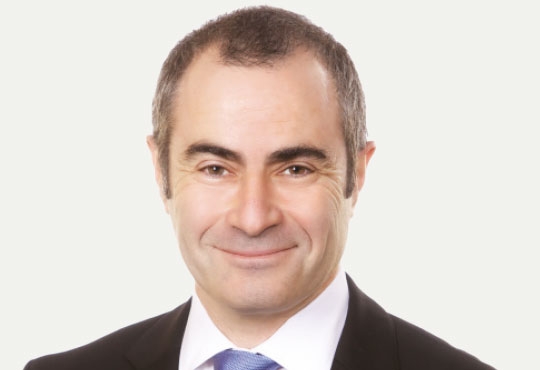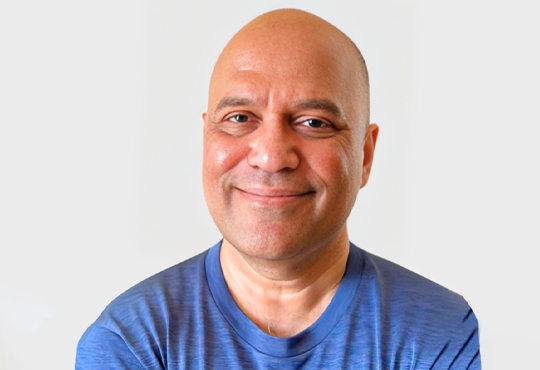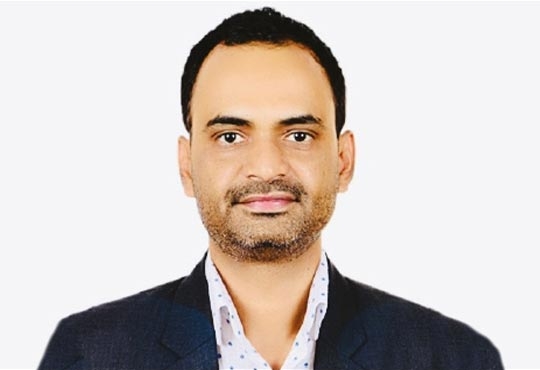
The Impact of 5G on AI
Excerpts from an interaction with Ramkumar Balasubramanian, Vice President - Platform Engineering, Paytm. | Monday, 24 August 2020, 06:33 IST
In a recent interaction with Emmanuel Christi Das, Editor, CIOReviewIndia, Ramkumar Balasubramanian, Vice President - Platform Engineering, Paytm shares the impact of 5th generation mobile technology and how it has already hit the market, as already 5G looks like it will hit our mobiles sooner than later.

How is the craze regarding 5G introduction in the near time? Is market able to cope with the buzz around it?
Be it Amazon Prime day Sale days or Flipkart Billion dollar sales, one interesting component is the sale of 5G enabled phones from Samsung, Xiomi, Oneplus and a host of other companies, which are competing with each other to sell the 5G enabled mobile phones.
With 5G around the corner, few technologies will get impacted positively by its introduction. Before we dwell deep into them, let us understand what is 5G. All wireless telecom companies operate on a resource called ‘spectrum’. Spectrum is a bandwidth of frequency allocated to a specific operator. Spectrum is usually divided into three types - low frequency (1GHX), medium Frequency (1 to 6 GHz) and High Frequency (Above 6 GHz). 5G pertains to high frequency and depending on the country the spectrum is auctioned on a specific frequency band.
All of us will experience 5G through mobiles first and later through other means like IOT devices and Autonomous vehicles.
4G revolutionized everything – from watching shows online to VoLTE. What is the hairline difference between 4G and 5G?
Let us understand what 4G enabled us today.
Today, we can look at Netflix and Amazon Prime thanks to the speed of the 4G. Though invented around 2018, it reached our mobiles by 2015. The 5G offers two things for us. Namely lower network latency and higher speed of data transmission. The speed of data goes up all the way to 20 gigabits per second, and it is 4X to 5X higher than 4G speeds. The high speed of data transmission leads to lot of data availability at the processing end, and therefore becomes a big opportunity for AI-enabled applications. There are 4 factors that determine the development of AI-enabled applications viz Processing power, Availability of data, Efficient AI algorithms and Domain Knowledge. The introduction of 5G gives a flip to the availability of data with the processing power being distributed across the devices.
While 4G applications majorly include high-speed connection. What are the applications will 5G unfold for the consumer-end in different sectors like Autonomous Vehicles, IoT, and Healthcare?
Autonomous Vehicles: Autonomous vehicles processes lot of data at any given point in time. It must anticipate, take a decision, and action the decision. The receipt of data is a major issue as any latency issues can cause slow receipt of data and therefore, the decision being slower leading to possible accidents. Autonomous vehicles process millions of events per second and the clarity of the data processed will be more accurate.
Autonomous vehicles use robust machine learning models to take decisions and will possibly change the lives the way computers, internet, and mobiles changed our lives. With more data available, the decision-making capability or the ability to predict the next action will have a better probability, leading to lesser accidents. One of the goals of autonomous vehicles is to reduce the accidents and save lives. 5G will make autonomous vehicles a reality the way Netflix was made a reality today by 4G.
IOT: One of the biggest impacts of 5G is going to be on IOT devices. The IOT devices are basically sensors on various devices. The sensor could be as simply as a motion sensor on a CCTV camera, or a sensor on the patient emitting events to reflect the health of the patient, or a sensor on an access door of the house and so on.
The sensor must send the data quickly to the receptor and the receptor must process and give an outcome. With 5G’s low latency the sensors will have the processing power to process the data quickly and give the outcome. So, a new framework will possibly emerge where the data required for deferred processing will go to the central unit whereas immediate processing will be done by the edge units. The biggest boost for edge computing models is the introduction of 5G and AI-models will be fitted into the IOT devices.
The big transformation for IOT devices will be that it would not be just a data collection unit but will transform itself into a decision-making unit. This will make the costs of these devices much lesser. Net-Net 5G will introduce a boom in the IOT devices market as it will combine the processing power with an ability to take autonomous decisions. This will create a major impact on the smart cities which would have more processing power at the devices end and therefore will create a hyper connected world. 5G is expected to connect about 50 billion devices and making the hyper connected world more intelligent with more data shared across, which will enable AI-models to make more intelligent decisions for us. Every mobile camera will have intelligent decision-making capability on focusing better as the latency of 5G is extremely low.
Healthcare: The biggest advantage of 5G on healthcare is going to be the improved nonlinearity of the work by the healthcare specialists. Telemedicine has picked up in a country like India. The 4G has led to video calling of the patients by the doctors in remote locations and helping the patients with the first level of diagnosis. With 5G the patients are seen with augmented reality mode leading to much faster diagnosis. With low latency and higher data transmission the ability of the machines to use AI-models and predict the outcome of diagnosis is more accurate.
An eye care specialist can predict the possible glaucoma using the 5G enabled models of the real time iris picture of the patients. With the introduction of 5G remote healthcare will become a norm rather than an exception. Treatment of infectious diseases becomes easier with remote healthcare and with the possible AI-models. All AI-models like more data and therefore prediction using sparse data may not be necessary.
With the announcement of introduction of every technology, there rises a speculation about the technology’s functioning. What are your thoughts regarding this?
The intelligent neural network models require more data and 5G is adept at offering the same. The ability to predict more accurately be it an image or voice or a fraud that happens in a financial transaction or an anomaly in a patient’s body will everything rewritten with the assumption that more data is available at any given point in time. The Telcos, the healthcare providers, Industrial robot manufacturers, IOT device manufacturers will have to invest more on AI to reduce the cost and take advantage of 5G. AI is going to be an investment engine for many of the existing players and the above are just few examples of 5G applications that may require more AI-investments.
CIO Viewpoint
Big Data and the Big Opportunities
By Bipin Kumar, Head - IT & Projection at Cinèpolis India
Optimized Networks For An Agile Workplace
By Steve Miller, CIO, Steelcase
The Hidden Revenue Potential in Mobile Big Data
By Manuel Stopnicki, CTO, Tektronix Communications
CXO Insights
Unlocking Efficiency: The Future of Smart...
By Ganesh Lakshminarayanan, CEO – India, Airtel Business
Data Center Modernization: Transforming the...
By Rajesh Tapadia, COO, Nxtra by Airtel
Revamping Workflow In Pharma Industry With...


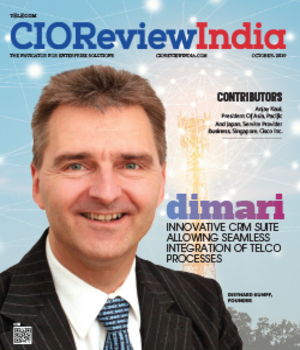
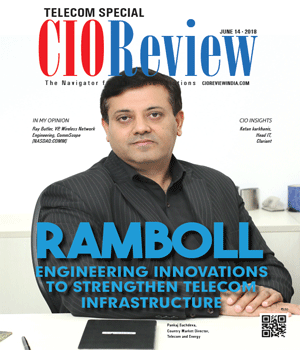
.jpg)
.jpg)

